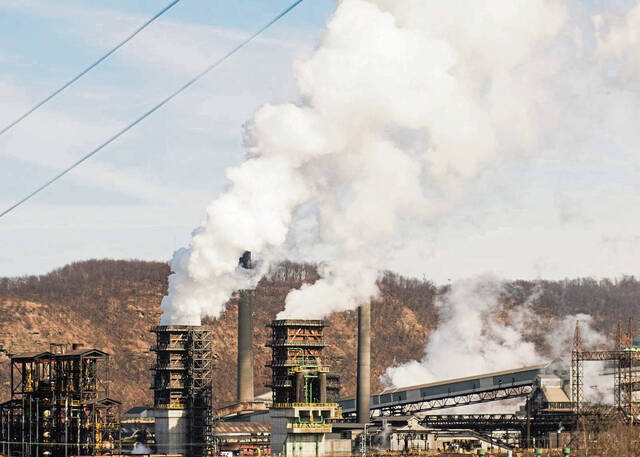U.S. Steel slapped with $1.8M fine for alleged hydrogen sulfide emissions
U.S. Steel faces a $1.8 million fine from the Allegheny County Health Department because the department said the company emitted too much hydrogen sulfide, the colorless gas that smells like rotten eggs, into the air more than 150 times since 2020.
The health department said the Clairton Coke Works plant exceeded daily state limits on hydrogen sulfide emissions on 46 days in 2020, 94 days in 2021 and 13 times so far in 2022 as of March 1. All were recorded at the air monitoring station in Liberty, which is about 2 miles southwest of the coke plant, the department said.
The fine totals just over $1.84 million. It comes less than a week after the health department issued more than $859,000 in fines related to alleged violations that happened in the second, third and fourth quarters of 2021.
“All sources of pollution are held to the same standards, and we will continue to hold accountable any company or facility that does not meet those standards,” said Health Director Dr. Debra Bogen.
It is the first time a fine has been issued by the department against a single source of hydrogen sulfide emissions.
An exceedance is recorded when the concentration of hydrogen sulfide, or H2S, in the air goes above the 0.005 parts per million per 24-hour period as set by Pennsylvania’s air quality standards. Hydrogen sulfide emissions can come from multiple parts of the coke production process, according to the health department, and can cause throat and eye irritation, fatigue and respiratory symptoms like wheezing.
A spokesperson for U.S. Steel said the “claimed exceedances” come from sources other than the Clairton plant.
Patrick Campbell, executive director of the Group Against Smog and Pollution (GASP), said the fine “has been a long time coming.”
“ACHD’s latest enforcement action against U.S. Steel confirms what so many of us long suspected — that U.S. Steel’s Clairton Coke Works is solely to blame for the ongoing exceedances of Pennsylvania’s 24-hour average standard,” Campbell said in a statement.
The exceedances were noted in an ACHD study released without fanfare late last week, and it details the work done to drill down on the source of the emissions and rule out sources other than the coke plant.
An analysis of weather, wind speed and direction, and other factors indicated that the source of the H2S had to be south/southwest of the monitoring site, leaving only two possible sources: the coke plant or the Clairton Wastewater Treatment Facility, which is just southwest of the plant.
Using portable sensors, the study found that H2S concentrations at the fence line of the wastewater facility were “significantly lower” than those measured at the Liberty monitor site during the same time. The study concluded that the wastewater plant does not contribute to the H2S emissions measured by the monitor.
Similar tests showed no other possible sources, including abandoned mines, according to the study.
U.S. Steel officials contest that.
“ACHD bases the fine on data obtained from the Liberty air monitor that collects data from multiple sources, most of which have no relation to U.S. Steel’s operations,” spokeswoman Amanda Malkowski said.
“While Allegheny County has been in attainment with federal air standards for two years, we still recognize that there is much to do to ensure that we continue to improve the quality of life of those who call this county home,” county executive Rich Fitzgerald said in a statement, applauding the health department’s work to “hold polluters accountable.”
Campbell, of GASP, said he hopes more action is to come.
“Hopefully, this is the first of many steps the health department will take to rectify this issue once and for all, because Mon Valley communities have endured poor air quality for far too long,” he said.
Remove the ads from your TribLIVE reading experience but still support the journalists who create the content with TribLIVE Ad-Free.

